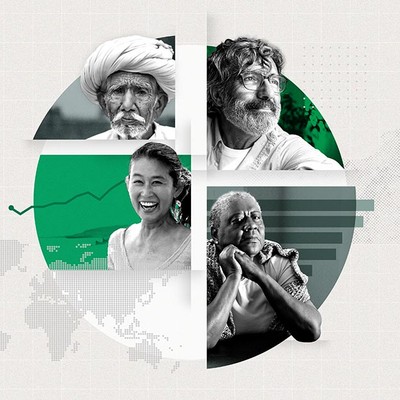WASHINGTON, D.C. — Gallup’s inaugural State of the World’s Emotional Health report shows that negative emotions worldwide remain far above levels from a decade ago, even after easing from their pandemic-era highs.
These elevated negative experiences matter because they reflect more than emotional wellbeing — they are also tied to peace and health. Distress is more common in less peaceful societies, with anger and sadness, in particular, tied to independent measures of global peace and negative emotions overall associated with life expectancy at birth.
The Global Emotional Landscape
In 2024, Gallup surveys in 144 countries and territories showed that more people worldwide are experiencing negative emotions than a decade ago, when global unhappiness began to rise: 39% of adults said they worried a lot the previous day, 37% said they felt stressed, 26% reported feeling sadness, and 22% reported experiencing anger.
Except for physical pain, all experiences of negative emotions have retreated from their pandemic highs, but each is still at least four percentage points higher than it was in 2014.
At the same time, the world hasn’t lost its joy. People’s self-reports of having positive emotions, including smiling or laughing a lot, have held steady — and in some cases are higher than they were during the pandemic.
In 2024, 88% of adults worldwide said they were treated with respect the previous day, up three points from 2023 and among the highest levels Gallup has ever recorded.
Smiling or laughing (73%), enjoyment (73%) and feeling well-rested (72%) held steady in 2024, while learning or doing something interesting dipped slightly to 52% but remained just above 2014 levels.
Emotions and Peace
To better understand how people’s emotional wellbeing relates to the status of peace, Gallup compared these 10 daily emotions with two indexes produced by the Institute for Economics & Peace. Together, the two indexes provide complementary perspectives of peace: peace as it exists today, and the conditions that make it endure.
- The Global Peace Index measures the absence of violence and conflict across 163 countries. This is based on official and expert indicators of related factors such as levels of conflict, crime, political instability and militarization.
- The Positive Peace Index measures the attitudes, institutions and structures that sustain lasting stability, including metrics of good governance, equitable resource distribution and social cohesion.
On both indexes, higher scores for a country indicate less peace. Gallup’s analysis found that negative emotions generally rise, and positive emotions decline, when there is less peace, although relationships are stronger with certain emotions than others.
Global Peace Index
Negative emotions are associated with worse scores on the Global Peace Index, which means they are more common in countries that experience more violence and conflict.
Sadness, worry and anger, in particular, are more common in less peaceful countries. These associations remain significant even after controlling for GDP, which means a country’s wealth doesn’t explain the entirety of the relationship.
Although higher in less peaceful countries, stress and physical pain are not associated with this measure of peace after GDP is taken into account.
Positive Peace Index
Anger, sadness and physical pain are strongly associated with worse Positive Peace Index scores. After controlling for GDP, anger, sadness and physical pain remain strongly associated with worse Positive Peace Index scores, while stress and worry do not.
In each case, positive emotions are less common in less peaceful societies, but their association with peace is weaker than the relationship with negative emotions and is often explained by a country’s GDP per capita.
This indicates that negative emotions are more consistent distress signals for peace. While peace is associated with lower levels of negative emotions, it does not appear to pay a positive emotional dividend beyond what is explained by GDP.
Peace, Health and Wellbeing
These patterns matter for health as well. Gallup’s tracking shows that negative daily emotions correspond with lower life expectancy at birth — where these emotions are more prevalent, populations are more likely to live shorter lives. Positive emotions also tend to be weaker in less peaceful societies, but their links to health are not as strong or consistent.
Bottom Line
When peace is absent, health systems and communities weaken, making daily life more difficult and less secure. When peace is present, both health and emotional wellbeing have room to improve.
Gallup’s research offers evidence that emotions can serve as vital signs of fragility for these larger systems, providing indicators that leaders can use to understand societal risks and to design policies that strengthen both peace and health.
Read the full report, released in partnership with the World Health Summit.
Stay up to date with the latest insights by following @Gallup on X and on Instagram.
For complete methodology and specific survey dates, please review Gallup's Country Data Set details. Learn more about how the Gallup World Poll works.





